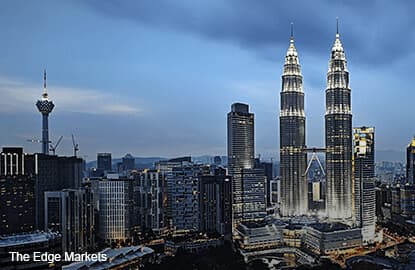
KUALA LUMPUR: Headline inflation as measured by the consumer price index (CPI) came in at 1.8% in December, slightly below consensus expectation of 1.9%. The overall inflation rate for 2016 was the same as 2015’s 2.1%.
The full-year inflation rate falls within the lower end of Bank Negara Malaysia’s (BNM) projection of 2% to 2.5%. For 2017, the central bank anticipates a stable inflation rate due to low global energy and commodity prices, and a generally subdued global inflation.
This is in line with most analysts’ forecast for the overnight policy rate (OPR) to be kept at 3% today after the central bank holds its first Monetary Policy Committee (MPC) meeting for 2017.
In July 2016, BNM slashed the OPR for the first time since 2009 by 25 basis points (bps) to 3% as the central bank sought to stem rising downside risks on the external front amid a low inflationary environment.
Five months later, in December, the CPI was up 1.8%, similar to November after climbing 0.4% from October, according to the Department of Statistics Malaysia (DoS) yesterday.
The DoS said inflation last month was driven by growth in food and non-alcoholic beverages (3.7%), and housing, water, electricity, gas and other fuels (2.1%) but was offset by the decrease in communications by 2.6%, transport (0.6%) and clothing and footwear (0.5%).
The transport group index dipped 0.6% year-on-year after falling 1.5% in November and 5.5% in October 2016.
The DoS said the average price of one litre of RON95 petrol was RM1.90 in December 2016 compared with RM1.95 a year ago.
“As for RON97, the average price declined to RM2.25 in December 2016 from RM2.30 in November 2016. However, the price of RON97 in December 2016 was lower than in December 2015,” it said.
It noted that the rise in the food and non-alcoholic beverages index was fuelled by the food subgroup comprising oils and fats (up 36.9%), fish and seafood (5.6%), vegetables (4.8%) and meat (3%).
As for food away from home, the index continued to rise in December 2016 and showed an increase of 3.5%, the department added.
For 2016, the CPI’s main upward contributor was from food and non-alcoholic beverages, which registered an increase of 3.9%, influenced by food at home which grew 4%, food away from home (3.8%), and coffee, tea, cocoa and non-alcoholic beverages (1.2%).
Among the subgroups of food at home were vegetables (up 6.5%), oils and fats (6.5%), fish and seafood (6.3%), fruits (4.8%) and meat (3.7%).
Housing, water, electricity, gas and other fuels rose 2.4% while alcoholic beverages and tobacco gained 17.2%, followed by miscellaneous goods and services (2.9%), restaurants and hotels (2.8%) and health (2.7%).
“The increases, however, were partly offset by transport group that fell 4.6% due to lower prices for petrol,” it said.
Core inflation for 2016, which excluded most volatile items of fresh food, and administered prices of goods and services recorded changes ranging from 2% to 3.6% compared with the same period in 2015.
Meanwhile, judging from BNM’s stable inflation projection for 2017 amid external headwinds, analysts opine that the OPR would be maintained at 3%.
Affin Hwang Investment Bank Bhd chief economist Alan Tan said that BNM’s rate cut last July was a pre-emptive move to support the Malaysian economy.
“However, in 2017, economic indicators such as the global purchasing managers’ index are showing improvements in major trading nations such as the US and China, and this growth is in tandem with the International Monetary Fund’s forecast global growth rate of 3.1% in 2016 and 3.4% in 2017.
“Therefore, we neither expect any rate cuts from BNM’s MPC meeting tomorrow (today) nor do we forecast any OPR cuts in 2017 from the central bank,” he told The Edge Financial Daily.
In a note yesterday, DBS Bank Group Research said going forward, with commodity and energy prices already off the bottom, there will be a pass-through to domestic prices.
It believed there could be upside risks to its inflation forecast of 2.2% for 2017 but, more importantly, rising inflation could impede the central bank from further easing monetary policy.
“The central bank missed the window to cut policy rate last November due to the tremendous pressure on the ringgit; the local currency plunged by about 5% in the month after the US election result led to pressure on emerging Asian currencies. Back then, inflation was still relatively low.
“But with inflation picking up and the US Federal Reserve expected to tighten monetary policy progressively for the rest of the year, which will narrow the interest rate differential and add further pressure on the ringgit, the chance of more monetary easing by BNM is low,” DBS said.
Nomura Holdings Inc’s global markets research said the CPI will not significantly influence the monetary policy outlook for the country as the projected pickup in headline inflation is mainly the result of base effects and fuel price hikes.
It added that with higher fuel prices, inflation is likely to be pushed further to 2.8% this year.
“Overall, we continue to expect BNM to cut its policy rate by 50bps in 2017 to support growth, starting in the first quarter of 2017, although the first cut will likely occur in March, in our opinion,” the firm said.